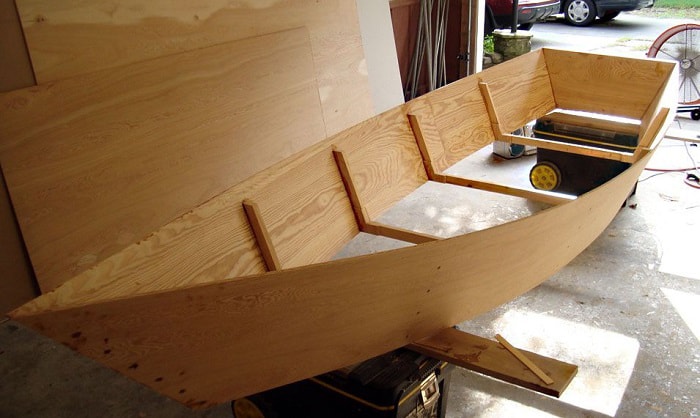
Design and Build a Wooden Rowboat with Simple Tools
Crafting a wooden rowboat is an endeavor that blends traditional woodworking skills with the satisfaction of creating a timeless vessel. While demanding dedication and patience, the process is attainable for those willing to learn and embrace the challenges. This guide offers a comprehensive overview of designing and building a wooden rowboat using basic tools and readily available materials.
Design Considerations
The first step in constructing a rowboat is to carefully consider its intended purpose and the desired dimensions. This stage lays the foundation for a successful project, ensuring that the final product meets your specific needs.
Purpose and Usage
Determine the primary function of your rowboat. Will it be used for recreational fishing, leisurely rowing, or more demanding tasks like transporting goods or navigating rough waters? This will dictate the size, shape, and stability of the vessel.
Dimensions and Capacity
Decide on the overall length, width, and depth of the rowboat. Consider the number of people it needs to accommodate and the amount of cargo it will carry. Refer to established boat designs or consult with experienced boat builders for guidance on appropriate dimensions.
Material Selection
Choose a suitable wood species for the construction. Traditional rowboat materials include cedar, oak, pine, and mahogany. Factors to consider include weight, durability, resistance to rot, and availability. For a beginner, a lighter wood like cedar or pine can be easier to work with.
Stability and Buoyancy
Ensure the boat's design provides adequate stability and buoyancy. The shape and placement of the hull and gunwales are crucial factors. Consult online resources or boat design books for guidance on achieving a stable and buoyant hull form.
Tools and Materials
Assembling a wooden rowboat requires a collection of essential tools and materials. While specialized tools are beneficial, a basic set of tools will suffice for a beginner project.
Hand Tools
- Hand saw
- Plane
- Chisels
- Mallet
- Screwdrivers
- Clamps
- Measuring tape
- Level
- Pencil
Power Tools
- Circular saw (optional)
- Drill (optional)
- Belt sander (optional)
Materials
- Wooden planks (appropriate thickness and width)
- Marine plywood (for transom, seats, and other structural elements)
- Boat building epoxy or marine-grade glue
- Fasteners (screws, nails, or copper rivets)
- Paint or varnish (for protection and aesthetics)
- Oars or rowlocks
Construction Process
Once you have gathered the necessary tools and materials, you can begin the construction process. This involves a series of carefully executed steps to ensure a structurally sound and aesthetically pleasing vessel.
Building the Frame
Begin by constructing the boat's frame using strong timbers, typically oak or cedar. These timbers will form the keel, stem, stern, and ribs of the boat. Secure the timbers together using mortise-and-tenon joints or other traditional boat-building techniques. Use marine-grade epoxy or glue to secure the joints and add strength to the frame.
Planking the Hull
Once the frame is complete, you can begin planking the hull. This involves attaching wooden planks to the frame, creating the boat's shape and watertight hull. The planks are usually shaped and cut to fit the frame, and then secured with marine-grade fasteners. Overlap the planks to create a strong, watertight seal.
Building the Deck and Transom
Next, you will construct the deck and transom. The deck is the flat surface that forms the top of the boat, while the transom is the vertical piece that forms the stern of the boat. These components can be made from marine plywood or wood planks. The deck is typically fastened to the hull using screws or nails, while the transom is secured using strong epoxy or glue.
Shaping the Hull
After the planking is complete, you will need to shape the hull to create a smooth, watertight form. This can be done using a plane, chisel, and sandpaper. Carefully remove excess wood and smooth out the surface to create a flowing, aerodynamic hull form.
Finishing the Boat
Once the hull is shaped, you can apply a finish to protect the wood from moisture and provide a more aesthetically pleasing appearance. Traditionally, rowboats are painted or varnished. Use marine-grade paint or varnish to ensure long-lasting protection and enhance the boat's appearance.
Adding Oars and Rowlocks
Finally, add the oars and rowlocks to the boat. The oars are the paddles that propel the boat, while the rowlocks are the metal brackets that hold the oars in place. The rowlocks are typically secured to the gunwales of the boat using screws or bolts. Choose oars that are the appropriate length and weight for the boat and your rowing style.
Safety Precautions
Building a wooden rowboat requires a high level of skill and safety awareness. Follow these safety precautions to ensure a safe and successful project.
- Always wear safety glasses and a dust mask when working with wood and power tools.
- Use proper lifting techniques to avoid injuries when handling heavy materials.
- Keep your workspace clean and free of clutter to prevent accidents.
- Work in a well-ventilated area to avoid inhaling wood dust or fumes from epoxy or paint.
- Always follow the manufacturer's instructions for using power tools and chemicals.
Conclusion
Building a wooden rowboat is a rewarding and fulfilling endeavor, demanding dedication and careful attention to detail. By adhering to the principles outlined in this guide, you can embark on a journey of craftsmanship, creating a timeless vessel that will provide years of enjoyment and connection with nature.
0 comments:
Post a Comment
Note: Only a member of this blog may post a comment.